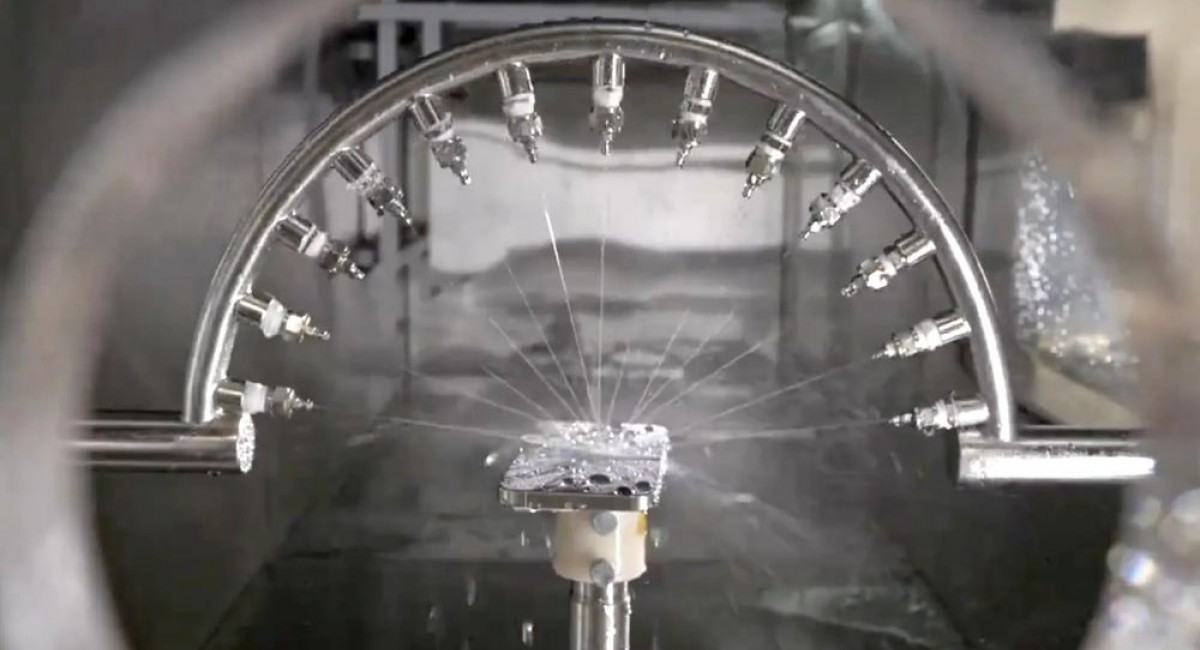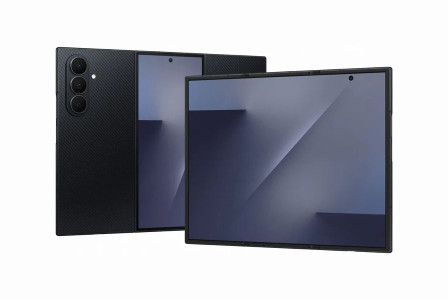SEARCH
Apple explains how it tests iPhone's durability and water resistance

SHARE IT
With the most recent iPhone series, Apple's models have dust and water resistance ratings as high as IP68. But have you ever pondered how the massive Cupertino company stresses test its gadgets to obtain the necessary resistance to water infiltration and durability? Tech critic Marques Brownlee posted a series of articles on the social media site X, which was formerly Twitter, providing an inside peek at the equipment and techniques used by Apple for water testing.
Apple iPhones undergo several phases of water testing in order to receive varying IP ratings. For example, Level 1 (IPX4) simulates rain by employing a drop tray under low pressure. One feature of Level 2 (IPX5) is a continuous low-pressure jet spray. A device at Level 3 (IPX6) shoots water at an iPhone that is positioned in front of it at high pressure. In order to attain IPX8 water resistance, the iPhone is finally trapped underwater and pressure is applied for an extended period of time to replicate depth.
The repairability of a gadget may suffer if it is waterproof. John Ternus, Apple's head of engineering, made the following statement regarding the trade-off between durability and repairability: "You can actually do the math and figure out there is a threshold at which if I can make it this durable then it's better to have it a little bit harder to repair." In the early days of the iPhone, Ternus explained, water ingress was a typical issue. For example, the gadget would frequently malfunction if it was put into a swimming pool or had a drink spilled over it. Over time, the corporation has made improvements to its products in an effort to reduce those failures.
To get the product there, you gotta design a lot of seals, adhesives, other things to make it perform that way, which makes it a lot hard to do that battery repair, You still need to do the battery repair, so we need to make sure we have solutions for customers to do that, which we do.
Apple provides a Self Service Repair program that allows users with the necessary skills to change device parts, such as the battery, display, and camera, and offers in-store battery replacement for a charge. Even though the corporation has faced controversy about its repairability, things have gotten easier recently.
Ternus claims that because failure rates have decreased, it is "objectively better for the customer to have that reliability" and better for the environment. Regardless of how easily fixable the gadget is, "every time you're bringing in new materials, you know, to replace whatever broke."
Over the years, Apple has expanded its battery of durability tests, and before each iPhone is deployed, the corporation may test more than 10,000 pre-release units of the device. Aside from water intrusion, Apple has robots and specialized gear that can simulate hundreds of various angles for drop testing or the vibrations of motorbike motors.
MORE NEWS FOR YOU

 Help & Support
Help & Support 

